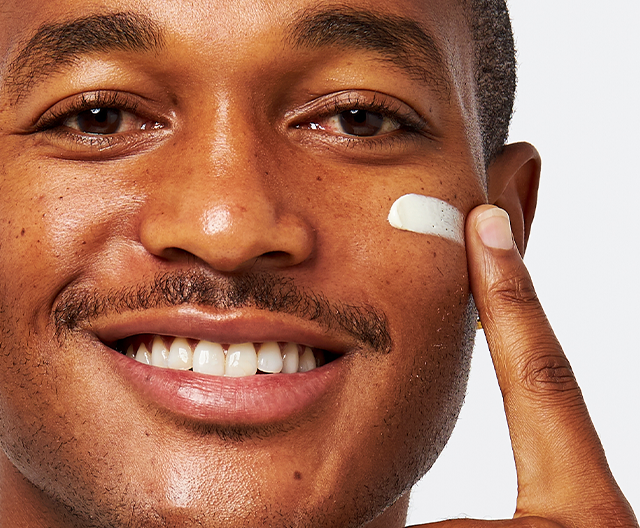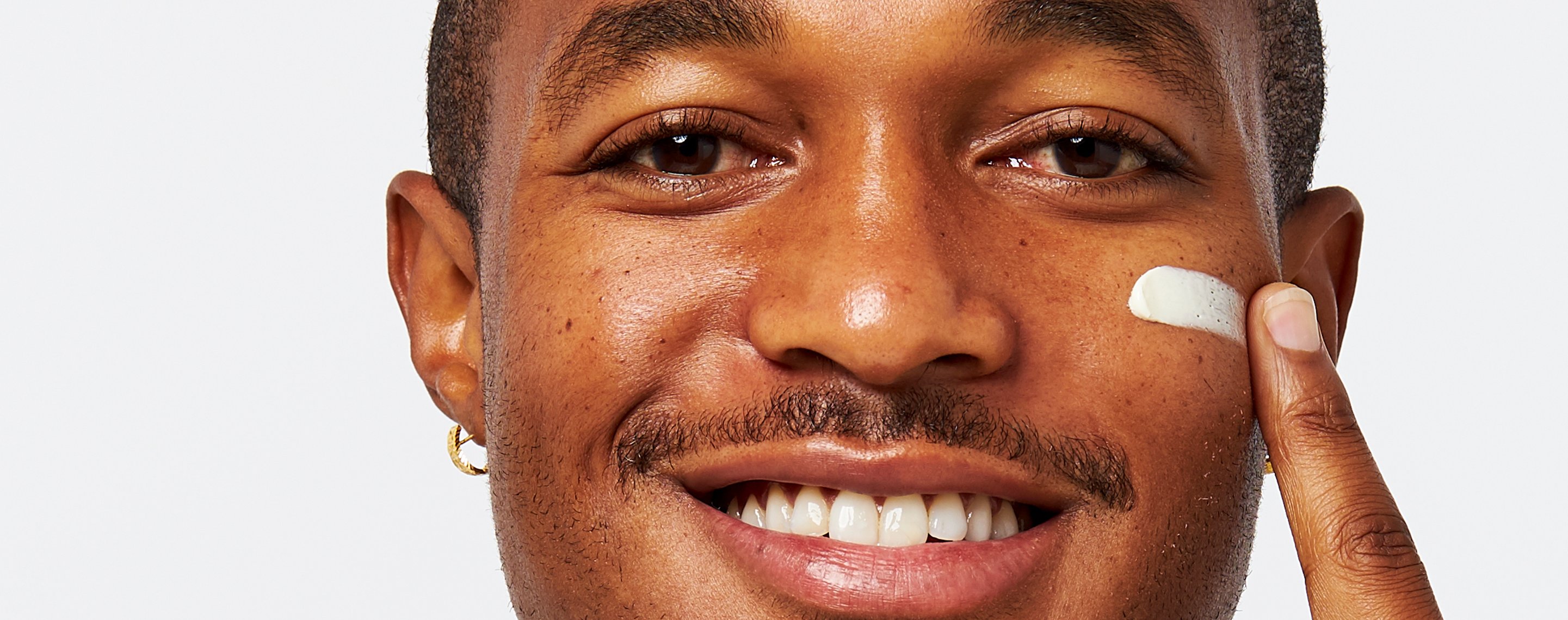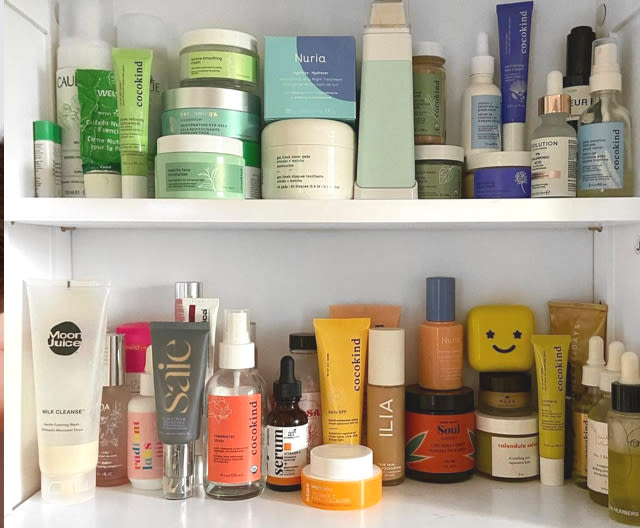Education
Best moisturizer for combination acne-prone skin


SHARE
Education
Best moisturizer for combination acne-prone skin
Medically reviewed by Vicky Davis, FNP
Written by Apostrophe Team
Last updated 11/3/2024
When you deal with acne, everything you put on your skin matters — and that includes your moisturizer. But what if you’re prone to acne and deal with combination skin?
Well, it can get even more complicated when considering moisturizers.
The right acne facial moisturizer can be used as a tool in your fight to combat breakouts and neutralize your skin. But shopping for a moisturizer? Yikes!
With so many options, it can get pretty overwhelming.
We’re here to arm you with the information you need! Knowing exactly what to look for can make your shopping so much easier.
Why Combination Acne-Prone Skin Needs Moisture
Some people have dry skin, others have oily skin. And then there are those with a combination skin type — which is a bit of both.
For many women who deal with combination skin, the “T-zone” (your forehead, nose, and chin) is oily and shiny, and your cheeks are dry.
So, where does the acne come in? The oily areas of your skin can lead to clogged pores, which can lead to acne breakouts. But it’s more complicated than that.
Since you have oily areas, you might be wondering whether or not you even need a moisturizer. The answer is simple: “Absolutely.”
If you try to dehydrate the oily areas of your skin, your body will work to lubricate the skin by producing more oil, which can lead to more breakouts.
Plus, if you’re using other treatments for acne, they may be drying out your skin.
So, if you’re using things like salicylic acid, benzoyl peroxide, or retinoids, a dermatology practitioner will often recommend using a moisturizer alongside these things to keep skin hydrated.
One study even found that people who used a moisturizer along with a retinoid from the start yielded better results than those who waited until the retinoid dried out their skin before using a moisturizer.
Of course, finding a moisturizer that will help you deal with acne is key — not using stuff that’ll just cause more.
Ingredients to Look for in a Moisturizer for Combination Acne-Prone Skin
When it comes to moisture-boosting ingredients, you want to focus on things that prevent moisture from leaving your skin and that add moisture to it.
With that, there are three important categories of active ingredients: occlusive, humectant, and emollient.
So, what do these things actually mean? We’ll explain.
Occlusive
Occlusive ingredients act as a moisture barrier, preventing moisture from leaving your skin. Here are a few good occlusive ingredients to be on the lookout for:
Squalene. This oily substance is used in everything from face washes to moisturizers due to its ability to give skin a softer appearance. It’s also found naturally in human sebum (which is something your body produces to keep skin lubricated). It’s sometimes listed as squalane on ingredient lists.
Silicone Derivatives. Dimethicone and cyclomethicone are two silicone derivatives sometimes used in moisturizers. These synthetic ingredients work by creating a barrier on the skin so that moisture stays put.
Humectants
Humectants are ingredients that draw water from the dermis to the epidermis. Your epidermis is the top layer of your skin and the dermis is the layer right underneath it. Common humectants to look for include:
Glycerin. This substance can be found naturally in sources like soybeans and cane, or manufactured for skincare products. When used in a moisturizer, it gives a boost of hydration and keeps skin smooth.
Hyaluronic Acid. This common ingredient can bind over one thousand times its weight in water. Translation: It can add serious hydration to your skin. Hyaluronic acid molecules come in a variety of sizes, and ideally, you want a moisturizer that contains molecules in a variety of sizes.
Alpha Hydroxy Acids There are many AHAs commonly used in moisturizers — including lactic acid. One study found that AHAs increased skin smoothness and improved elasticity. Some AHAs also do double duty, helping to exfoliate skin or treat dark spots.
Emollient
Ingredients in this category smooth skin by dropping little bits of oil in the space between skin flakes to hydrate and smooth.
Dimethicone. Yes, this occlusive ingredient is also emollient.
Octyldodecanol. While some alcohols are drying, others help hydrate — and this one does the latter. This one acts as a lubricant for skin.
When shopping for a moisturizer for combination acne-prone skin, look for one that utilizes a combo of the above in its ingredient list.
Other Things to Look For In a Moisturizer
Along with the above ingredients, there are a few other things you may want to look for when shopping for a daily moisturizer.
The term non-comedogenic denotes that something is specifically formulated not to clog pores. You can also look for an oil-free formula.
Anti-inflammatory ingredients like aloe vera are also sometimes used in moisturizers.
While aloe vera may not have hydrating benefits in concentrations under 10 percent, the anti-inflammatory properties can help soothe inflamed acne.
Finally, you may want to consider a lightweight moisturizer, which can prevent that greasy feeling.
Finding The Right Moisturizer For Your Acne Prone Skin
While it’s tempting to skip the moisturizing step of your skin care routine when you have combination skin, it’s a big mistake.
Repeat after us: adding hydration will not give you greasy skin. In fact, the exact opposite is often true. When you add moisture, your skin is less likely to overproduce oil to lubricate your epidermis.
Plus, if you’re dealing with acne and treating it, many of those treatments can dry skin out. So, using a moisturizer is vital.
Using the above list of ingredients above or looking for a product labeled non-comedogenic and lightweight will help you find the ideal moisturizer for your skin type.
References:
Youn, S., Na, J., Choi, S., Huh, C., et al. (2005, August). Regional and seasonal variations in facial sebum secretions: a proposal for the definition of combination skin type. Skin Research Technology, 11(3): 189-95. Retrieved from
How to Control Oily Skin. American Academy of Dermatology. Retrieved from
Moisturizer: Why You May Need It If You Have Acne. American Academy of Dermatology. Retrieved from
Chularojanamontri, L., Tuchinda, P., Kulthanan, K., Pongparit, K., (2014, May). Moisturizers for Acne. The Journal of Clinical and Aesthetic Dermatology, 7(5): 36-44. Retrieved from
Hayashi, N., Kawashima, M., (2014, June). Study of the usefulness of moisturizers on adherence of acne patients treated with adapalene. The Journal of Dermatology. Retrieved from
What Kids Should Know About the Layers of Skin. American Academy of Dermatology. Retrieved from
Liu, K., Nassim, J. The Hype of Hyaluronic Acid. Harvard Health Publishing. Retrieved from
Tran, D., Townley, J., Barnes, T., Grieve, K., (2015). An antiaging skin care system containing alpha hydroxy acids and vitamins improves the biomechanical parameters of facial skin. Clinical, Cosmetic and Investigational Dermatology, 8: 9-17. Retrieved from
Chularojanamontri, L., Tuchinda, P., Kulthanan, K., Pongparit, K., (2014, May). Moisturizers for Acne. The Journal of Clinical and Aesthetic Dermatology, 7(5): 36-44. Retrieved from
Like what you just read? Sign up for our email list to get the scoop on skincare science delivered straight to your inbox.

Deep Dives
A dermatologist shares his thoughts on the recent studies about benzoyl peroxide and benzene.
Read More
Education
What is milia?
What is milia? Today, we’re jumping into one type of bump that you may have heard about most commonly in infants — milia.
Read More
Education
How to build a face care routine
As you get into skincare, it might seem overwhelming, especially trying to figure out the order you're supposed to apply products in. Below, we detail how to build a face care routine for your skin!
Read More
